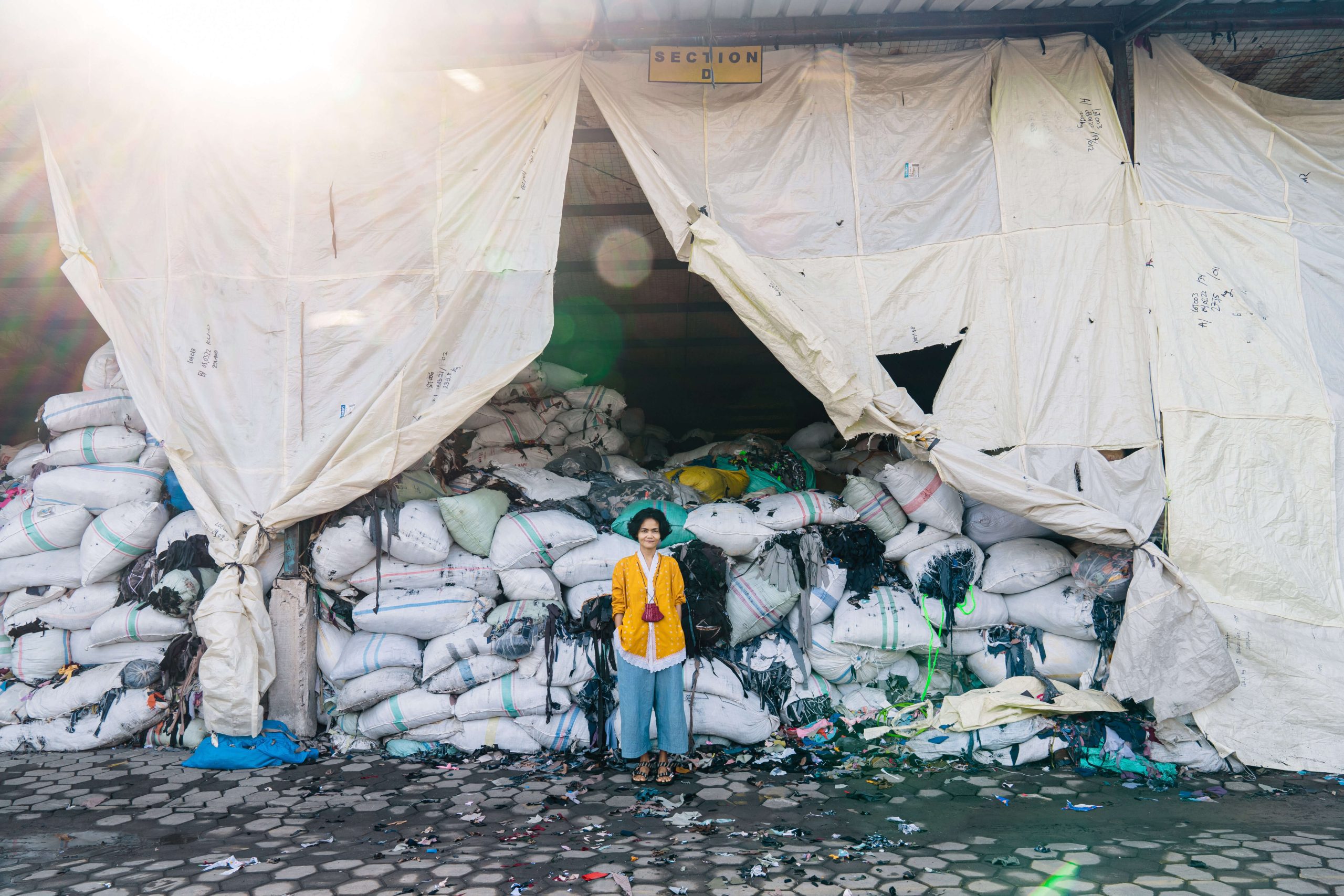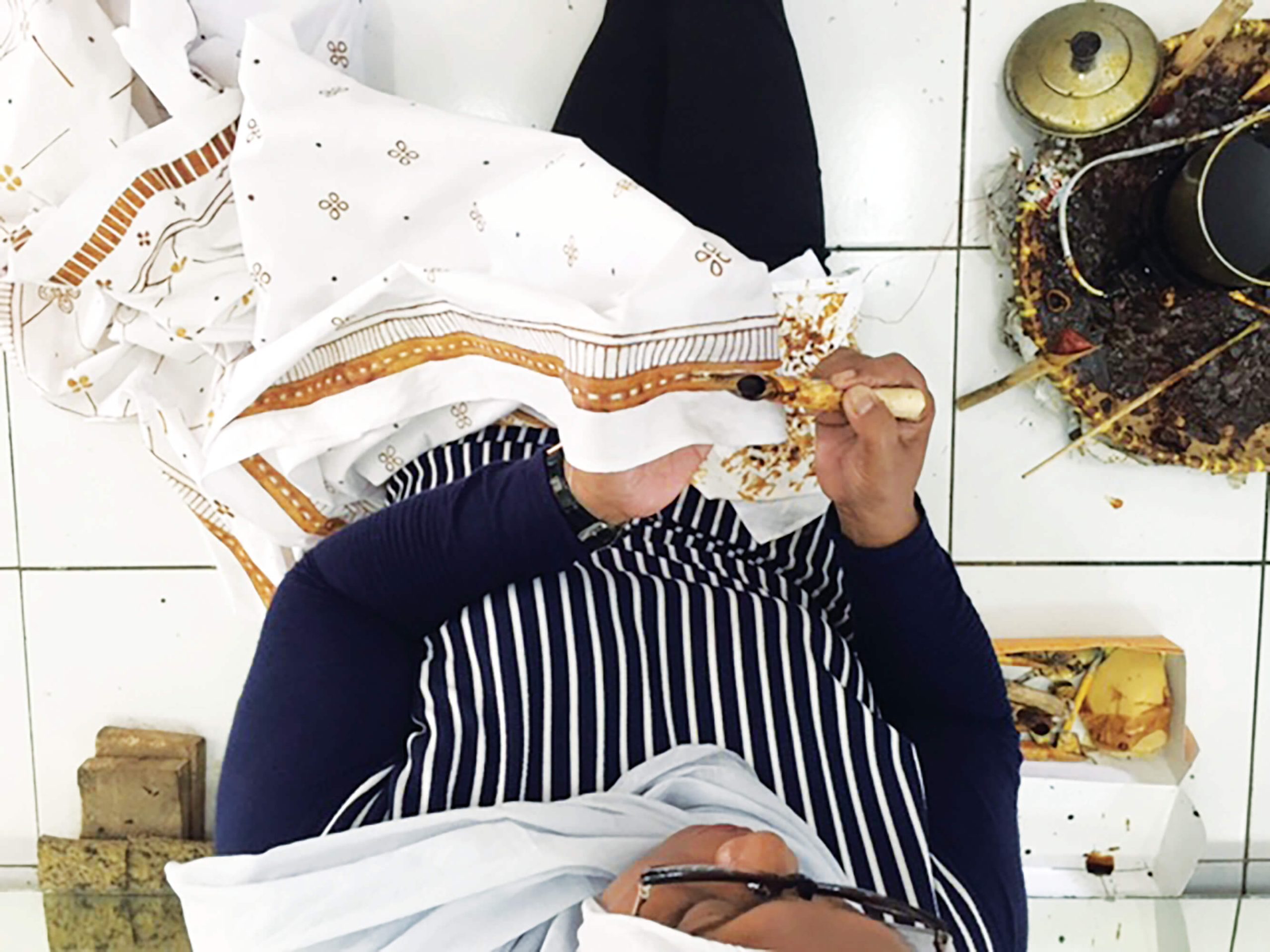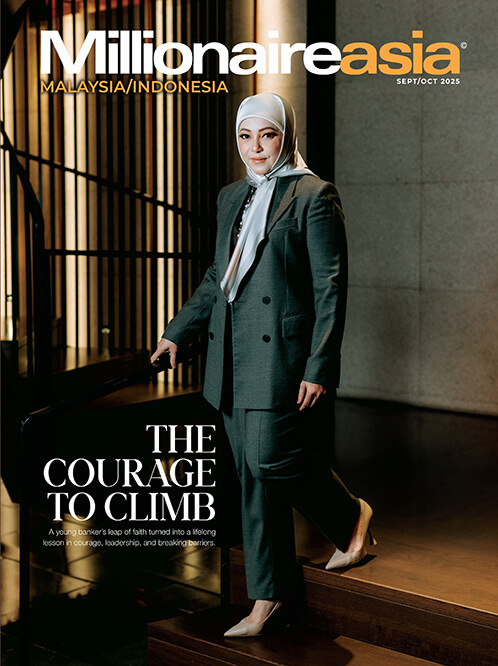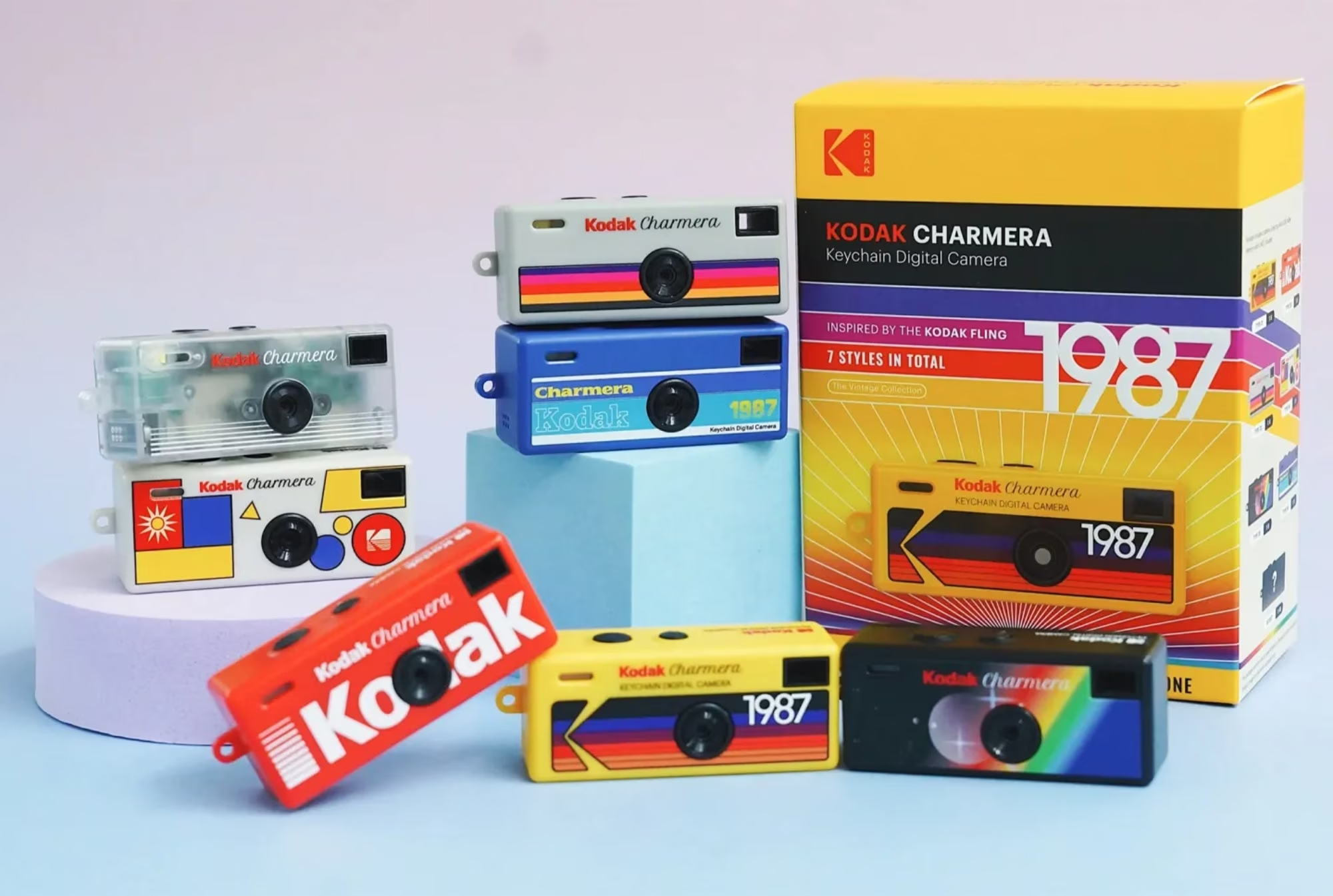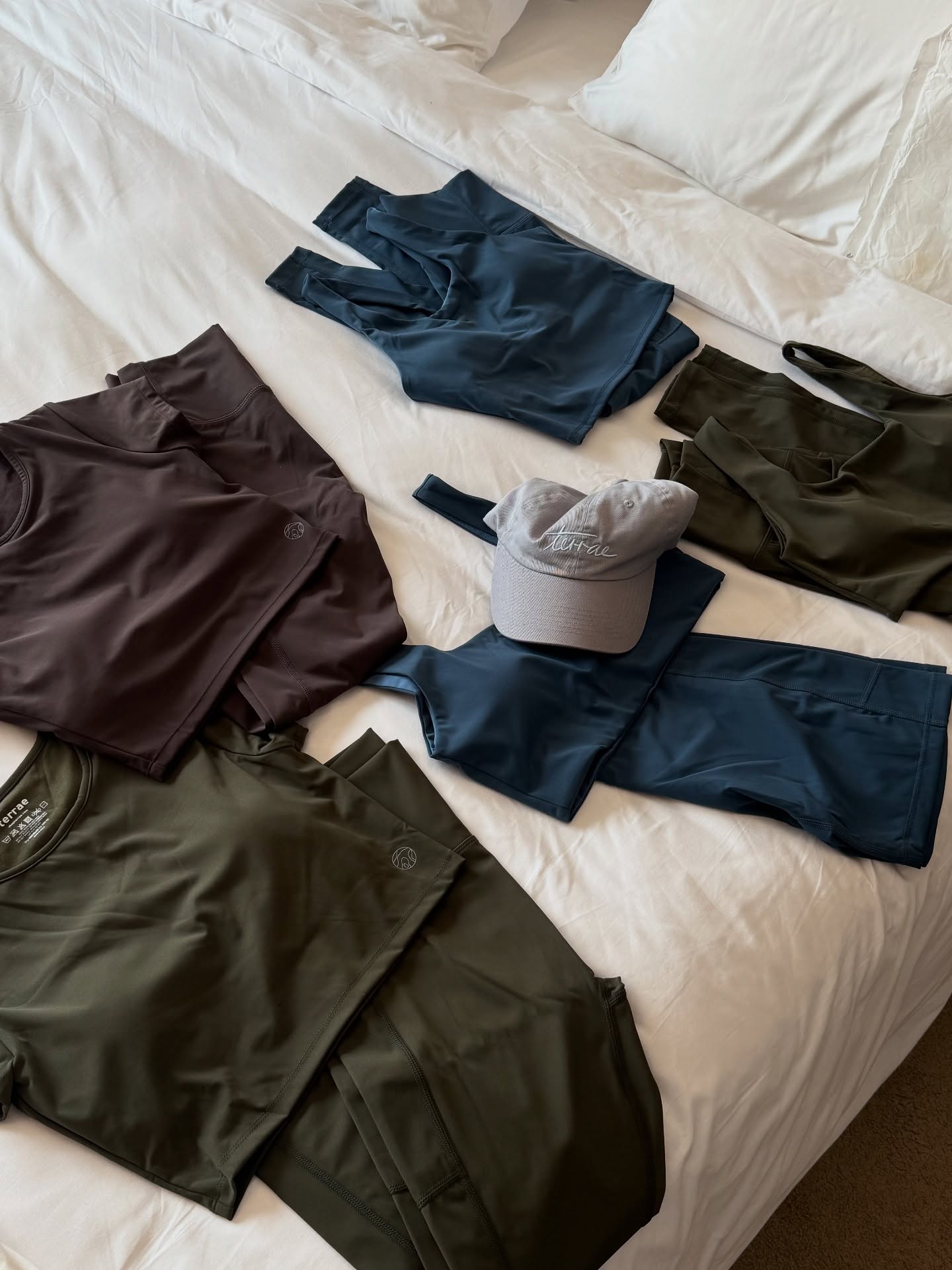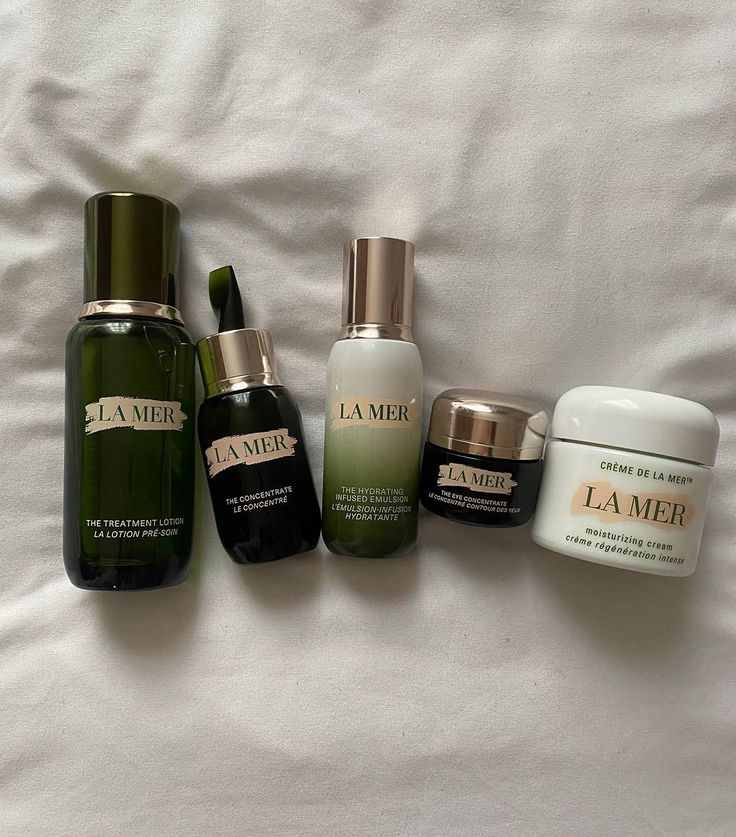As far as the eye can see.
That’s the meaning behind Sejauh Mata Memandang – the name the visionary Chitra Subyakto chose for her clothing brand.
It’s a reflection of the beauty and inspiration she finds in abundance in the world around her – and which she captures in vibrant and iconic textile designs that have graced red carpet events the world over and made their way into the closets of both young and old.
Despite its length and complexity, she chose the phrase because she found it endearingly evocative.
“Perhaps the name choice is personal. I love exploring natural environments, both in Indonesia and abroad. Each time I encounter a beautiful scene, I use this phrase,” Subyakto tells MillionaireAsia during an interview at Grand Indonesia Mall in Jakarta, Indonesia.
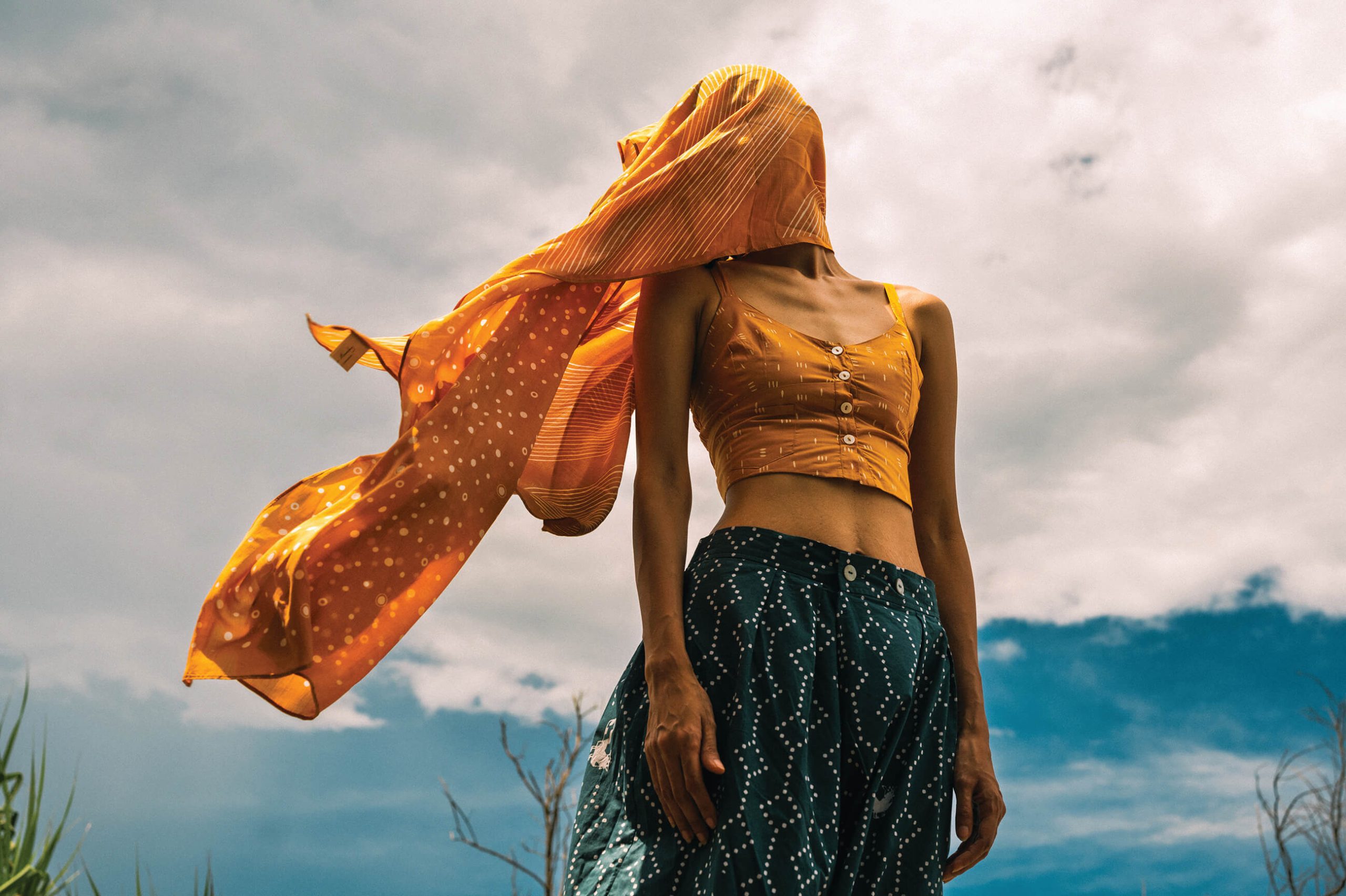
The brand was born in 2014, out of a recognition that the Indonesian market was largely unfamiliar with the principles of slow and circular fashion. Circular fashion involves designing, producing, and distributing clothing, shoes, and accessories to be used and recirculated responsibly for as long as possible, before safely returning them to the biosphere when they are no longer usable.
Her creations include shawls, cloths, and kebayas, all deeply inspired by Indonesian culture. The very first motif Sejauh Mata Memandang rolled out was a rooster design that has become the brand’s mascot.
This motif was inspired by the timeless imagery of a rooster and flowers found on traditional bowls used to serve chicken noodles, a staple in Indonesian cuisine. In eastern Indonesia, the rooster is believed to bring new hope, as it crows every morning to welcome a new day.
The variety of cuttings of traditional kebaya tops offered by the brand also make it clear that pride in one’s culture and heritage never goes out of style.
In fact, Sejauh Mata Memandang has been the pick of some famous stars in Indonesia. Actress Dian Sastrowardoyo is known to be a fan of a brand – and has even worn its pieces to film festivals abroad. And electronic music duo Gabber Modus Operandi wore Sejauh Mata Memandang during their Samsara performance in Singapore in May this year.
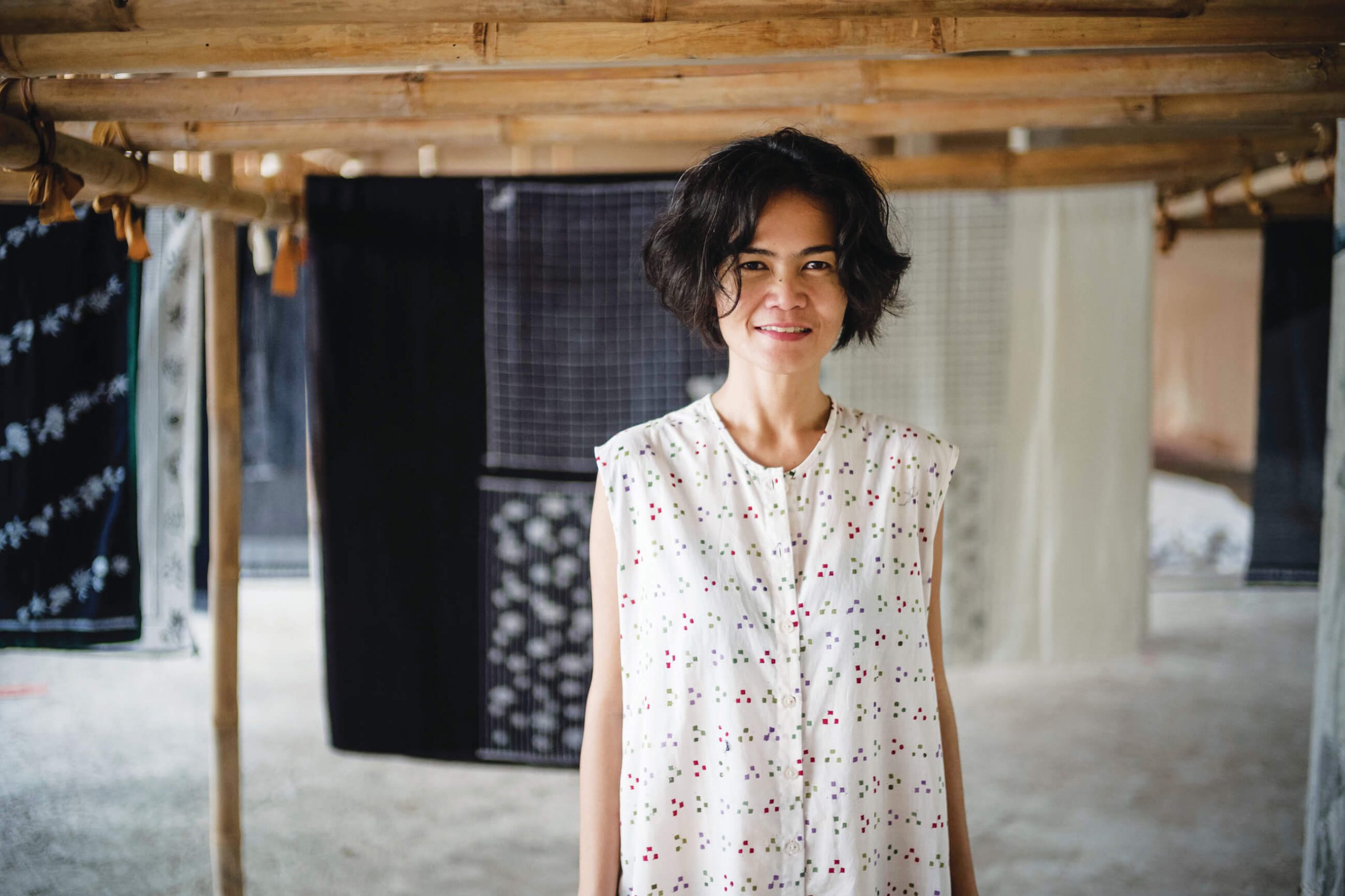
Before launching the brand, Subyakto, now 52, immersed herself in the study of Indonesian cloth motifs, learning more about them from books, exhibitions, and in conversations with artisans.
She grew up with a love of traditional fabrics and clothes, inspired by a mother who sparked in her the joy of embracing and wearing with pride these symbols of her cultural identity.
And as she dived into her studies, she gained a deeper appreciation for them, learning the meaning behind different Indonesian fabric motifs, each of them with their own story to tell.
This love for traditional fabric making and design is the heart and soul of her brand – and she hopes to stoke that same passion in the next generation.
Subyakto’s aim is to inspire in today’s youths the same joy she found in these fabrics, and to encourage them to embrace traditional garments like the kebaya by integrating them into their modern wardrobes.
“Initially, we created designs using batik cap (stamped batik, which uses a copper stamp to apply wax) and batik tulis (hand-drawn batik). We soon realised that motifs could be inspired by anything. For instance, our first inspiration came from an image of a chicken and flowers in a bowl, proving that inspiration for motifs can come from anywhere,” Subyakto says.
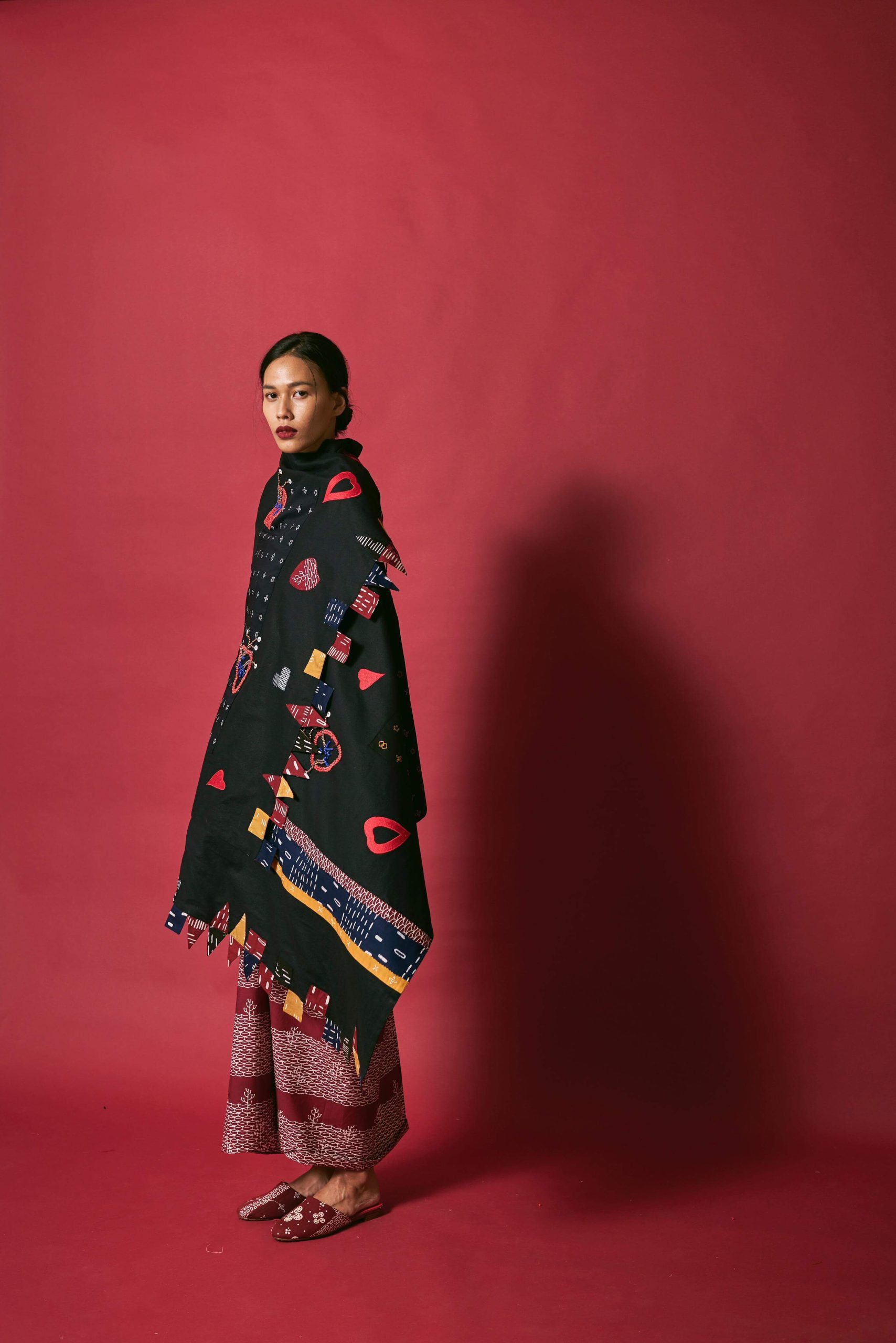
Eco-friendly slow fashion
The climate crisis has intensified recently, encompassing more than just air pollution.
And the fashion industry is one of the culprits, with clothing production contributing significantly to environmental pollution.
Subyakto strongly believes that embracing circular fashion is more crucial than ever before in the current landscape.
She notes that the conventional linear production systems that are so rampant in modern fashion production chains — where products are designed, made, used, and then discarded— fail to address the issue of sustainability.
There is much the modern industry can learn from tradition.
According to Subyakto, traditional cloth-making practices in Indonesia’s remote areas are inherently circular.
For instance, garment-makers here utilise natural dyes derived from local plants and rely on meticulous handcrafting techniques. These sustainable methods have been passed down through generations, from grandmothers to mothers to daughters, preserving a timeless heritage of eco-friendly craftsmanship.
“So, indeed, the fabric was never intended to be discarded,” says Subyakto, who in conversation is thoughtful and articulate, and who lights up when meeting new people.
These traditional practices have largely been forgotten due to modernisation.
Social media promotes a fast-paced lifestyle, where every new post showcases different outfits, feeding into the fast fashion trend. This has led to a culture of frequent shopping, fuelling an industry that produces new clothes with frantic speed, with little thought for environmental consequences.
There are some green shoots of hope, though, says Subyakto. In the last two or three years, she’s seen a gradual resurgence in responsible and sustainable methods of making clothes.
It’s still uncommon, but, says Subyakto: “I see it as a promising sign.”
Sejauh Mata Memandang is dedicated to producing slow fashion that prioritises environmental responsibility.
The brand sources a variety of materials, including recycled fabrics obtained through its own recycling programme. This commitment ensures that their production processes minimise waste and place less stress on the environment.
Sejauh Mata Memandang collaborates with various partners to ensure their commitment to eco-friendly fashion. These include recycling partners, batik and weaving artisans in the central Javan city of Pekalongan, and suppliers in Bali for materials like Tencel and linen, which are made from natural fibres, and are recyclable and biodegradable.
Furthermore, the brand is currently producing cloth in collaboration with cotton farmers in Tuban, East Java, and Lombok, West Nusa Tenggara, before weaving it in Pekalongan.
It takes a village to create eco-friendly fashion, with players interested in protecting the environment coming together to put their beliefs into practice.
Subyakto says: “Over time, we developed organically by meeting inspiring figures from whom we learned a great deal. Our growth has been shaped by the remarkable people we’ve encountered.”
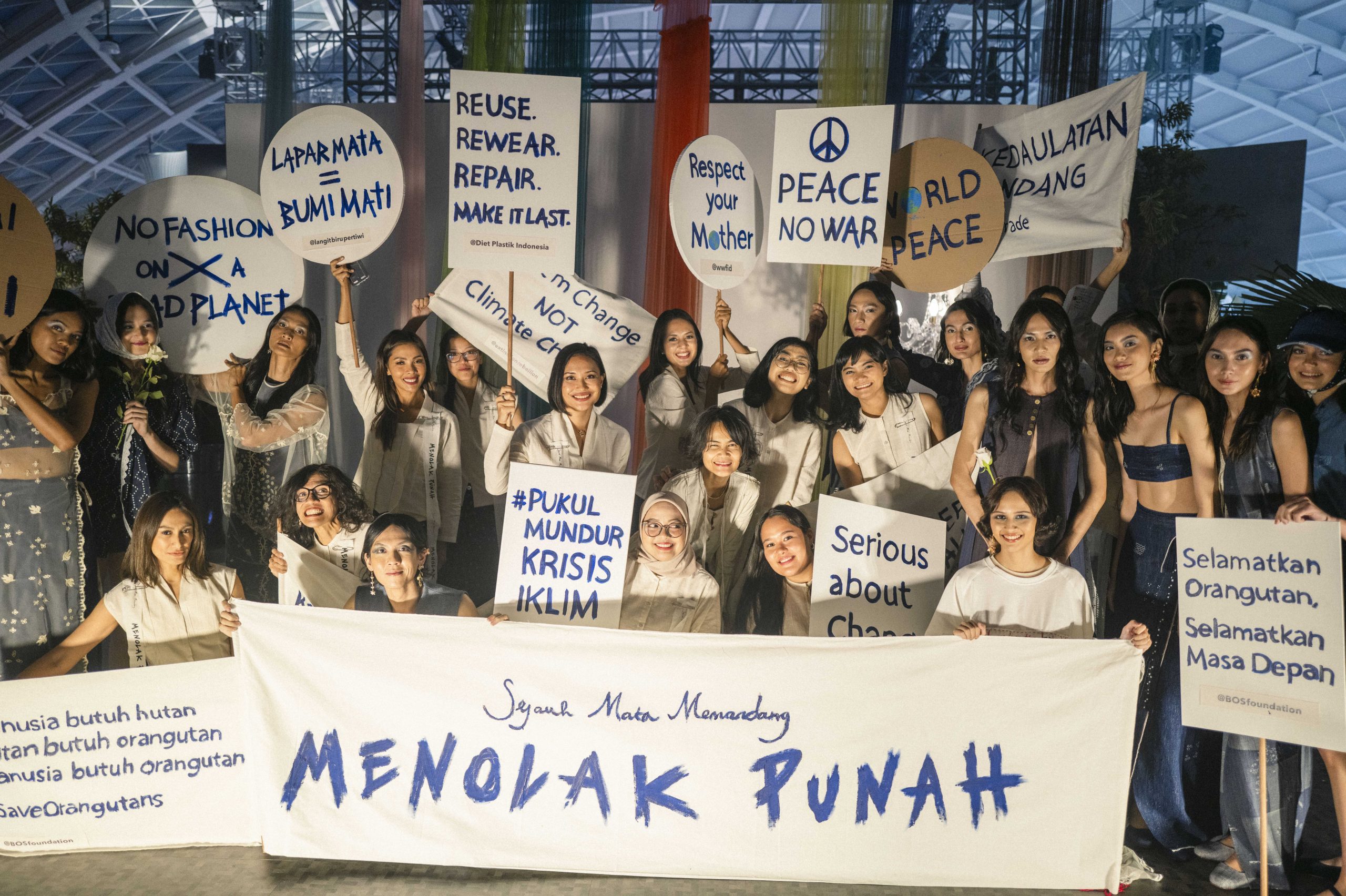
Surrounded by great women
The tradition of cloth-making in Indonesia has long been the domain of women.
In Sumba, East Nusa Tenggara, for example, women weave cloth while managing their households, as the men work in the fields. They create these textiles while cooking and use them in ceremonies for their children. This practice has deep cultural roots, with women traditionally engaging in weaving, batik, and other textile crafts.
Sejauh Mata Memandang employs a dedicated team of 20 staff members, with 90 per cent of them being women.
Additionally, Subyakto notes that out of the 200 artisans including printers and weavers collaborating with Sejauh Mata Memandang, 70 per cent are women, highlighting the brand’s commitment to empowering women in the industry, and equipping them with ways to earn a livelihood from their skills.
“As a woman myself, I am surrounded by an incredible team of women. This connection seems to draw us to other knowledgeable and talented women who provide invaluable feedback and input, allowing us to collaborate effectively,” Subyakto says.
In 2017, Subyakto collaborated with the Jakarta National Handicraft Council to provide a batik-making training programme for women residing in Marunda Flat, North Jakarta.
Sejauh Mata Memandang specifically trained these women to create motifs inspired by the Semanggi Bridge in Jakarta. The resulting Semanggi motif fabrics have been used to craft shirts, blouses, outerwear, and more, and continue to be a part of Sejauh Mata Memandang’s offerings to this day.
Subyakto reminisced about her first encounter in 2017 with the women of Marunda Flat, who were initially too shy to even make eye contact during conversations.
Then a sea change happened as they gained confidence their skills – and in themselves.
“When we learn something new, it enhances our self-assurance,” notes Subyakto on the women’s newfound confidence after six months of training.
And soon, the women were able to arm themselves with a sense of independence. A year later, they said they could buy phone credit without asking their husbands for cash. And after two or three years, some were even able to purchase their own motorbikes to get around, giving them more flexibility and independence.
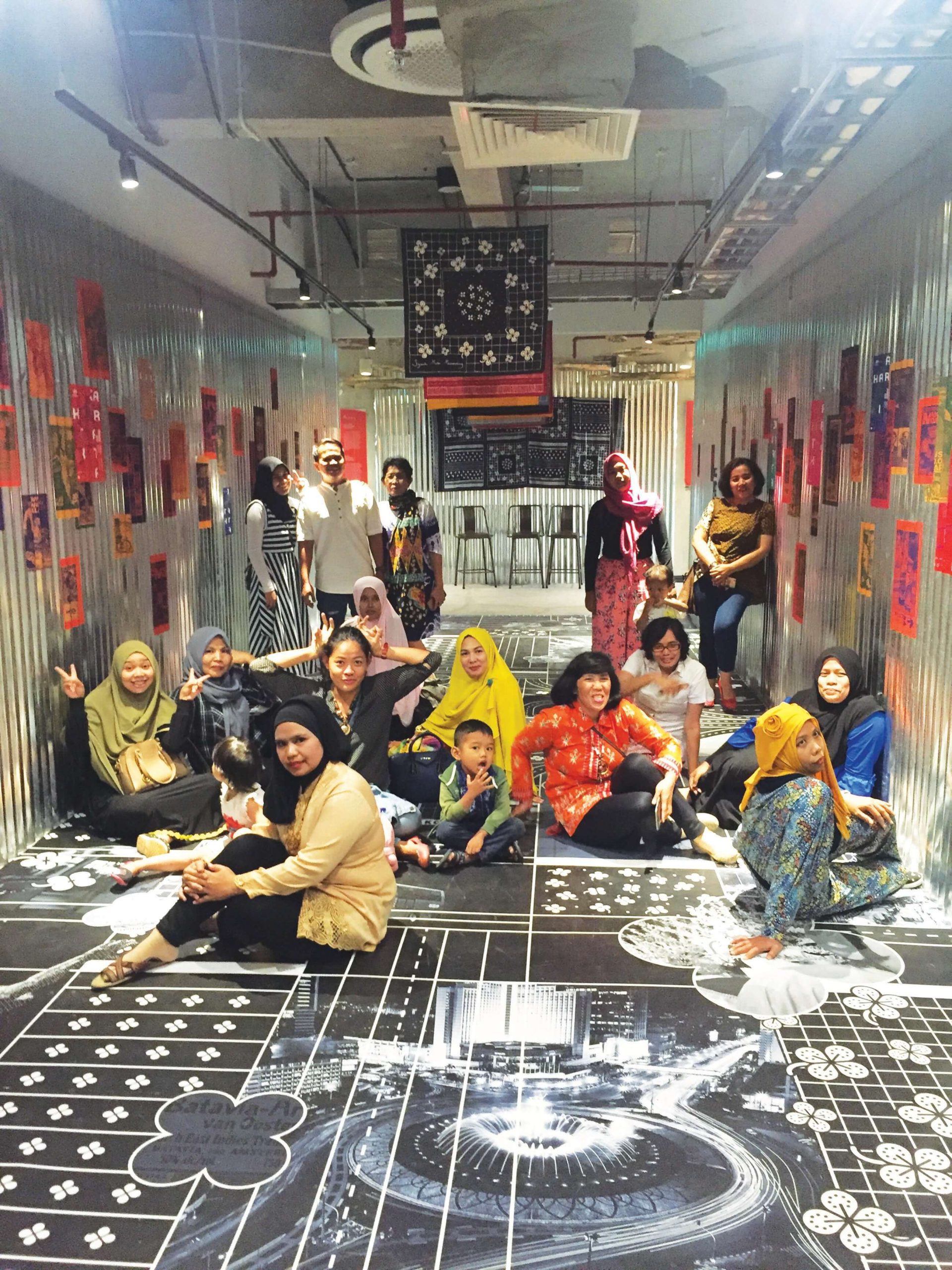
Subyakto notes that, generally, cultural, religious, and social norms are still deeply ingrained in Indonesian society, often being utilised by men to exert control over women.
So what’s important is to get a conversation started: to let women meet up and talk to one other about their hopes and their struggles and discover that there is so much they can do – and then to equip them with the skills they need to uplift themselves.
These activities not only keep them engaged but also help them avoid dwelling on troubling thoughts, says Subyakto.
Many of the women residing in the Marunda Flats were once novices in the art of batik-making.
Prior to their relocation to Marunda Flats, they were familiar figures at traffic lights, wandering the roads to sell snacks to passing motorists – a venture they could not keep up when they were moved to a more remote locale.
But look at them now.
“With a supportive discussion partner or group, woman bolster each other. By offering reminders, women gradually become more independent and less reliant,” says Subyakto.
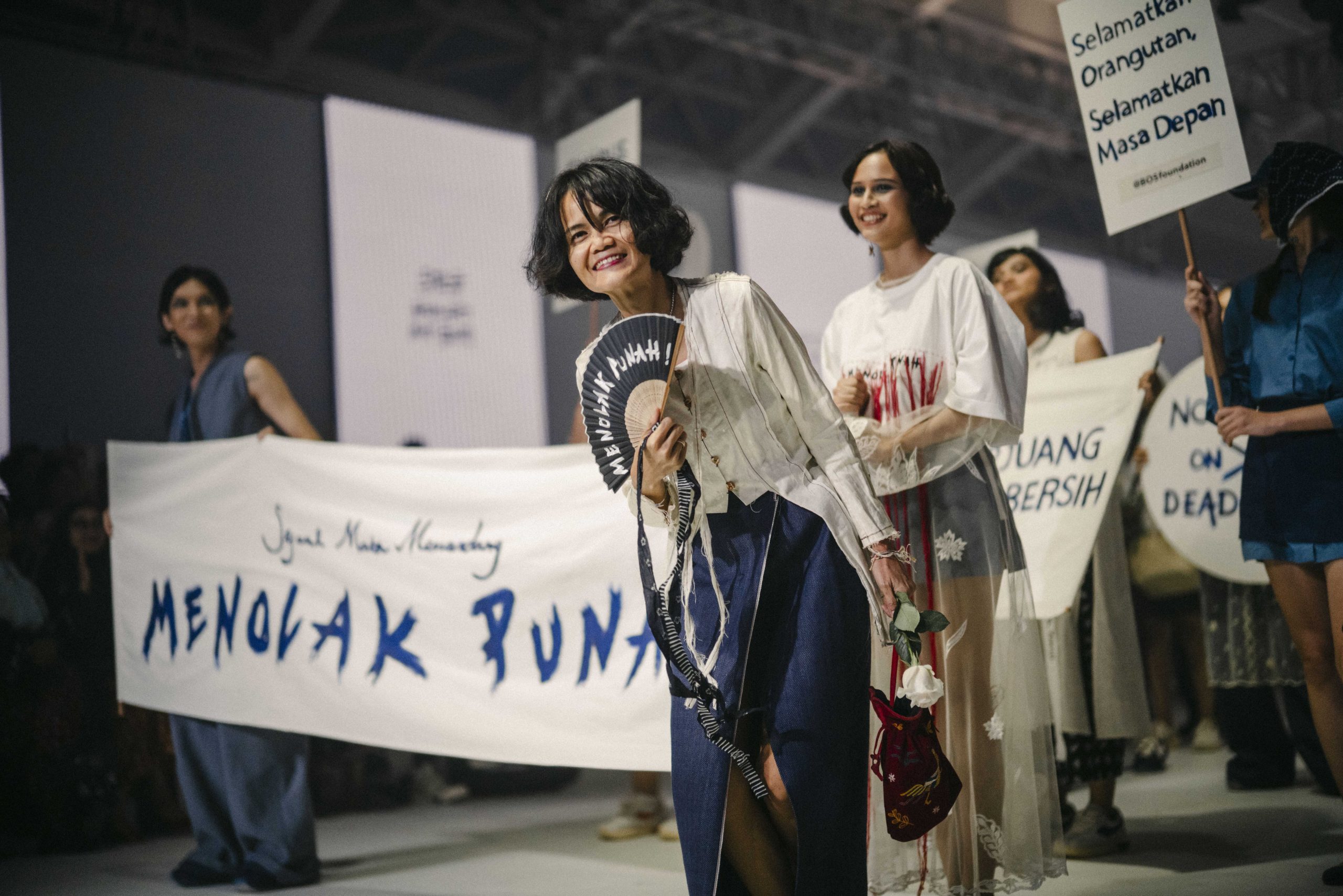
What’s next?
A decade since its founding, Sejauh Mata Memandang has now become a well-loved Indonesian clothing brand and a beacon of eco-responsibility. With its unwavering commitment to greener practices, the brand has made a notable impact on the environment.
According to the brand’s impact report, it has worked with its community to amassed over 5,700 kilograms of clothing through the Sejauh Recycling Program from September 2021 to May 2023. This initiative has led to a reduction of 60,000 kilograms of CO2 emissions annually during the same period.
Subyakto is deeply thankful for the opportunity to engage with and learn from a host of influential figures, a privilege that she says has empowered her to develop more responsible products.
Sejauh Mata Memandang persists in operating a business that reflects the collective endeavour of many, and remains committed to creating products in a way that minimises environmental consequences.
Over the next 5 to 10 years, her vision is to create a seamlessly efficient supply chain from upstream to downstream. Her goal is for everyone involved—whether farmers, weavers, or batik artisans—to find ways to continue improving themselves and their skills so that they can experience enhanced livelihoods and a higher quality of life.
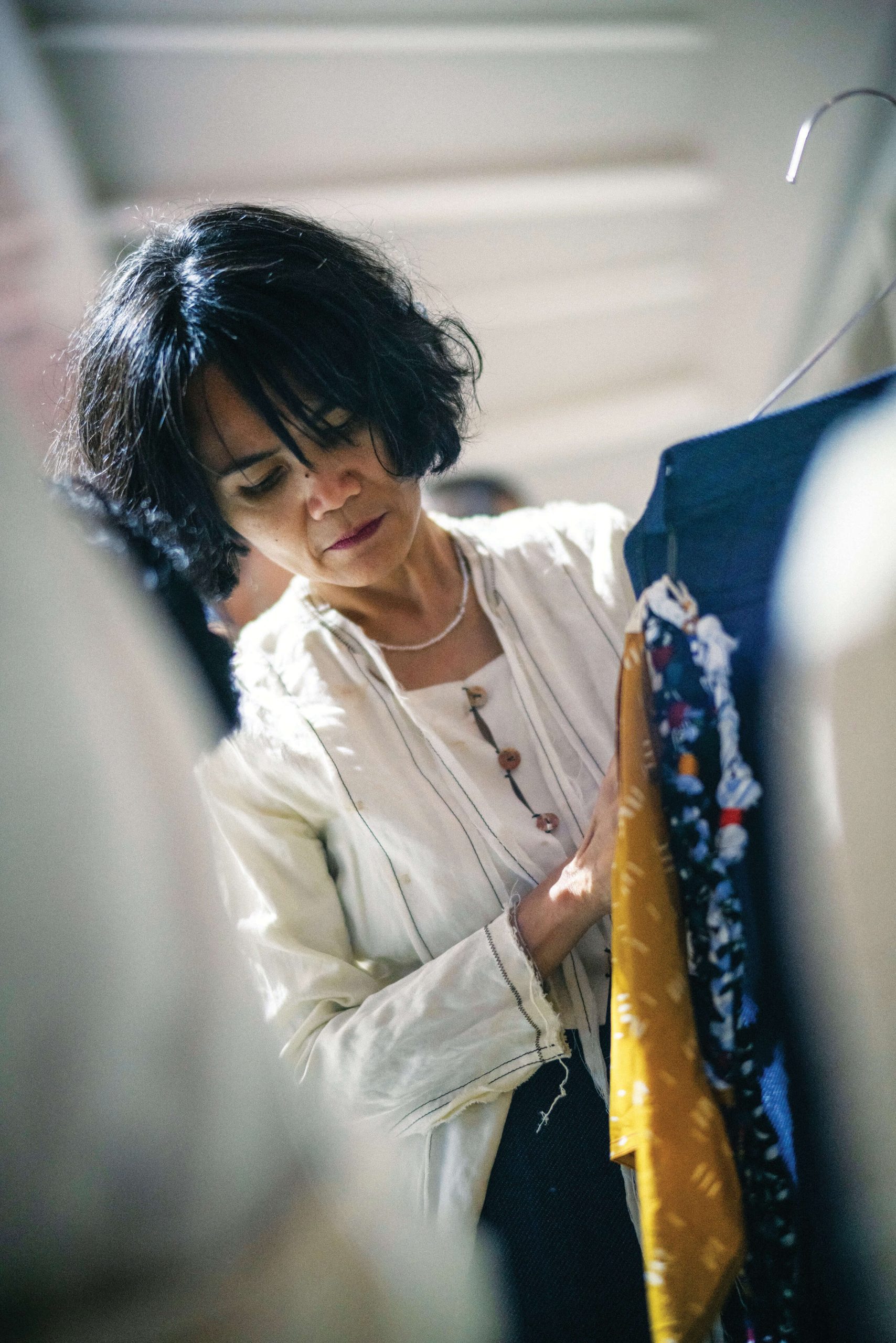
And Subyakto is optimistic.
“Villages can attain independence and self-sufficiency in apparel, enabling Indonesia to produce items that are truly 100 percent made in Indonesia. In 5 to 10 years, I foresee many villages achieving this level of textile industry self-reliance.”
It will take hard work and willpower – and she and her brand want to be part of that wave.
And they’re hoping to make more waves overseas too.
Subyakto has identified potential markets beyond Indonesia, including Malaysia, Singapore, and Australia, and says the brand is refining its products to facilitate expansion into these countries.
“We are planning to start with Malaysia, as many of our customers from there frequently inquire about our opening. We are conducting R&D to decide the best products and strategies for this market,” she says.
